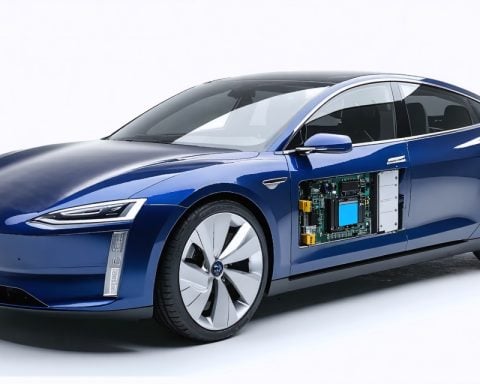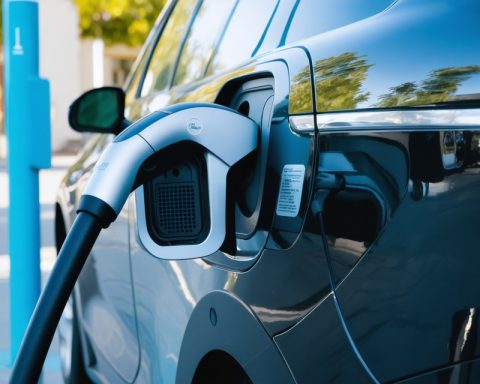Understanding the Risks of Fire-Damaged Batteries in California
As wildfires continue to devastate the Los Angeles region, officials are facing a new peril: the remnants of damaged batteries. These include those from electric vehicles (EVs) and home storage systems. Governor Gavin Newsom highlighted the risks posed by these batteries, emphasizing their potential dangers when exposed to extreme heat.
Cleanup crews are adapting their techniques to safely deal with this technology. While traditional combustion engines are familiar territory, the rise of electric vehicles introduces complexities. Damaged batteries can ignite even days or weeks after a fire has been extinguished, posing significant threats during recovery efforts. Authorities are now treating these compromised battery packs as hazardous materials.
With over 41,000 electric vehicles registered in Pasadena, the proximity of these devices to fire-ravaged areas raises concerns. Experts also note that modern home storage systems generally pose a lower risk of reigniting than EV batteries, as they often lack harmful heavy metals.
After tragedies like the 2023 Maui fires, specialized teams now handle the safe removal of lithium-ion batteries. By employing advanced techniques—like wrapping damaged units to prevent further risks—authorities aim to mitigate dangers in fire-prone environments.
Experts emphasize the importance of transitioning to cleaner energy, while advocating for safety measures such as housing batteries in fire-resistant structures. In emergencies, drivers are urged to evacuate with their vehicles and avoid handling debris themselves due to potential toxic hazards. Let’s stay informed and prepared.
Implications of Fire-Damaged Batteries in an Evolving Society
The interplay between wildfires and battery technology is creating notable challenges for society. As electric vehicles (EVs) become more commonplace, the potential fallout from fire-damaged lithium-ion batteries presents serious implications for public safety. The risks associated with these batteries can amplify the already burdensome recovery efforts in wildfire-affected areas, complicating emergency response protocols.
In a cultural context, these incidents may spur a dialogue about the sustainability of battery technology and its integration into our daily lives. The public’s trust in electric vehicles and renewable energy solutions may waver as concerns about battery safety emerge. The expectation of a clean energy future must be tempered with responsibility in the design and disposal of these technologies.
From a global economic perspective, the rising incidents of battery fires could catalyze increased regulation and innovation in the battery manufacturing and recycling sectors. Companies might need to invest more in fire-resistant materials and safer battery technologies to avoid liability and improve public perception.
Moreover, the environmental impact of battery disposal must not be overlooked. The surge of fire-damaged batteries presents the possibility of toxic substances leaching into soil and water resources, compelling a reevaluation of existing recycling methods. As communities grapple with these dangers, the shift towards more innovative and sustainable practices will be crucial in shaping a safer, cleaner future.
Beware the Hidden Dangers: Fire-Damaged Batteries and the Future of Safety in California
Understanding the Risks of Fire-Damaged Batteries in California
As California grapples with ongoing wildfires, the focus has shifted toward an alarming new threat: fire-damaged batteries. Specifically, those from electric vehicles (EVs) and home storage systems pose unique hazards if they endure exposure to extreme heat.
The complex chemical makeup of lithium-ion batteries means that even after fires have been extinguished, these batteries can continue to smolder or ignite, potentially endangering cleanup crews and affected communities. Governor Gavin Newsom has voiced concerns regarding these risks, urging for heightened safety protocols during recovery efforts.
Features and Specifications of Lithium-Ion Batteries
To understand the risks associated with fire-damaged batteries, it is essential to consider their specifications:
– Energy Density: Lithium-ion batteries can store a significant amount of energy in a small size, making them a popular choice for electric vehicles. However, this density contributes to the severity of fires when they burst or explode.
– Chemical Composition: Many lithium-ion batteries contain flammable electrolytes, which can catch fire when exposed to high temperatures.
– Complex Cooling Systems: Modern EVs are equipped with advanced thermal management systems, essential for maintaining battery safety but also complicating firefighting efforts in the event of a battery-related fire.
Pros and Cons of Using Electric Vehicle Batteries
Pros:
– Environmental Benefits: EVs generate no tailpipe emissions and contribute to reducing overall air pollution.
– Long-Term Savings: Lower fuel and maintenance costs associated with electric vehicles.
Cons:
– Fire Risks: Lithium-ion batteries can pose a significant hazard in fire situations, as seen in recent wildfire incidents.
– Hazardous Cleanup: Damaged batteries present challenges for recovery efforts and require specialized handling to ensure safety.
Use Cases and Innovations in Battery Technology
With the rising popularity of electric vehicles and energy storage systems, innovations are continuously emerging:
– Solid-State Batteries: Designed to reduce the risk of fire, these batteries use a solid electrolyte instead of a liquid one, potentially improving safety.
– Battery Management Systems (BMS): Advanced BMS monitor conditions and can shut down battery operations if hazardous situations arise, mitigating risks.
Limitations and Security Aspects
While electric vehicle batteries pave the way for a sustainable future, their limitations are becoming clearer:
– Storage Limitations: In some instances, battery capacity may decrease after exposure to extreme heat, impacting overall vehicle performance.
– Cybersecurity Concerns: The connectivity of modern EVs introduces vulnerabilities that may be exploited by malicious actors, raising concerns about safety and personal data security.
Pricing Outlook and Market Analysis
As the market for electric vehicles expands, so does concern over battery maintenance and end-of-life disposal. Analysts predict that the costs associated with high-tech battery recovery and recycling will become increasingly significant, influencing pricing strategies across the automotive industry.
Conclusion: Moving Towards a Safer Future
As California continues to combat climate change, the adoption of electric vehicles and sustainable energy systems is crucial. However, accompanying safety measures must evolve in tandem. From enhanced fire safety protocols to innovative battery technology, there remains a continuous need for awareness and preparedness in dealing with fire-damaged batteries.
For more information on safety and energy innovations, visit energy.gov.












